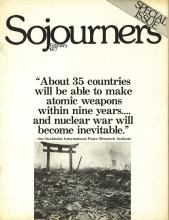In 1956 Lockheed Aircraft Corporation moved its missile division to the San Francisco Bay area. The plant they built in Sunnyvale was later to become Lockheed Missiles and Space Company. Wanting to get back into aeronautics, Bob hired on in the engineering department and we bought our present home in Santa Clara. Our sixth and youngest child was not quite a year old at the time.
Before we accepted work at Lockheed, and before we moved to the Bay Area, we did some serious thinking about the function of money in our lives. We were not living in poverty but we had plenty of bills, mainly doctor bills. But we were happy. We could see that that was not always the case when people had lots of money. What if this new job should become a huge financial success? How would we react?
We finally made an agreement between ourselves and with God that if we ever received an abundant income we would not seek material excess. Instead we would use our resources to raise good children and to do God’s will as we saw it. At that time we didn’t foresee the ramifications of that pact, but it was the beginning of our responsiveness to opportunities that unfolded.
After starting the engineering job, Bob went back to school at San Jose State University. Sputnik was launched shortly after and the Russians flew their first intercontinental missile. The later-to-be-proved-false missile gap sparked national paranoia. Operational dates for the new Polaris submarines were moved ahead. Bob was working on the submarine-launched missiles and his engineering department went on a ten-hour-day, six-day-week schedule. In spite of this exhausting pace, Bob continued part time with college courses and, after five grueling years, managed to graduate with highest honors in his aeronautical engineering class.
Read the Full Article
